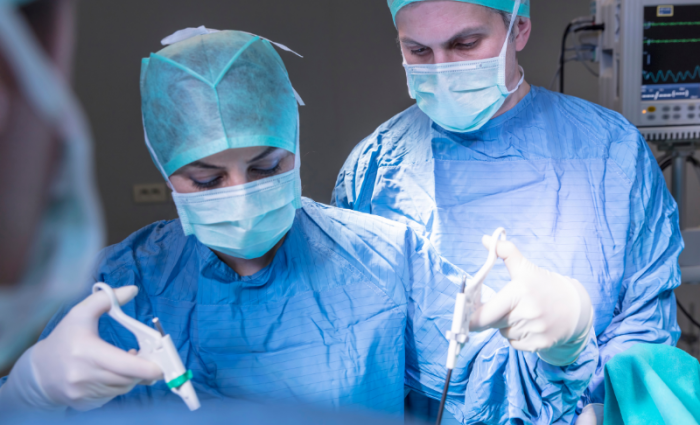Overview
Laparoscopy is a minimally invasive surgical technique used for diagnosing and treating various conditions. It involves making small incisions through which specialized instruments and a camera are inserted, allowing surgeons to view and operate on internal organs with precision. This procedure is often preferred over traditional open surgery due to its reduced pain, minimal scarring, and quicker recovery time. Patients undergoing laparoscopy typically experience less post-operative discomfort and can resume normal activities sooner. However, recovery time can vary depending on the type of procedure performed and the individual’s overall health. This blog explores the typical recovery timeline following a laparoscopy, discusses factors that influence healing, and provides practical tips for a smooth recovery. Whether you are scheduled for a laparoscopy or are simply interested in understanding the process, this guide offers clear and evidence-based insights into what to expect during the post-operative period. It ensures informed decisions regarding care.
Understanding Laparoscopy and Its Purpose
Laparoscopy is widely used for both diagnostic and therapeutic purposes in modern medicine. This technique allows surgeons to examine the organs within the abdominal and pelvic cavities through small incisions, reducing the need for large surgical cuts. It is commonly performed for procedures including gallbladder removal, hernia repair, and the treatment of conditions such as endometriosis. In addition to minimizing physical trauma, laparoscopy offers the benefits of shorter hospital stays and faster overall recovery compared to conventional surgery. The precision and clarity provided by the laparoscopic camera enable more targeted interventions, which can improve surgical outcomes and decrease postoperative complications. Understanding the purpose and advantages of laparoscopy is essential for patients preparing for surgery, as it helps set realistic expectations for recovery and performance. This minimally invasive approach represents a significant advancement in surgical care, prioritizing patient comfort and efficient treatment. It also empowers confident, informed choices regarding surgery outcomes.
What is the Recovery Time for a Laparoscopy?
Recovery time following a laparoscopy can vary significantly depending on the type of procedure performed, the individual’s overall health, and the complexity of the surgery. In most cases, patients experience a relatively quick recovery compared to traditional open surgery. Many individuals are able to return to light activities within a few days and resume normal daily routines within one to two weeks. However, full recovery, including the resolution of any discomfort and the return to more strenuous activities, may take several weeks. During the initial recovery period, patients might feel some pain, tenderness, or bloating around the incision sites. Doctors usually recommend rest and limited physical exertion for the first week, while gradually reintroducing activities as healing progresses. Pain is typically managed with prescribed medications and over-the-counter pain relievers. It is important for patients to follow their surgeon’s instructions regarding wound care, activity restrictions, and follow-up visits. Factors that can influence recovery time include the patient’s age, nutritional status, and whether any complications arise during or after surgery. While many individuals see significant improvement in a short period, some may require additional time if complications such as infections occur. Ultimately, clear communication with healthcare providers and adherence to post-operative guidelines help ensure a smooth and timely recovery process that is tailored to each individual’s circumstances. It is crucial for patients to maintain open dialogue with their surgeons during recovery, addressing any concerns promptly to avoid setbacks. Following recommended rest, nutrition, and gentle exercise supports healing and long-term success for health.
Factors Influencing Recovery and Tips for a Speedy Return
Several factors influence the recovery time following a laparoscopy, and understanding these can help set appropriate expectations. The complexity and duration of the procedure play a significant role, as more extensive surgeries generally require longer recovery periods. Additionally, the patient’s age, overall physical fitness, and pre-existing health conditions can affect how quickly healing occurs. Emotional well-being, stress levels, and adherence to post-operative instructions are also important. To promote a speedy recovery, patients are encouraged to gradually reintroduce physical activities rather than resume strenuous exercise immediately. A balanced diet rich in vitamins and minerals can aid in tissue repair, while adequate hydration supports overall recovery. Rest is crucial in the initial days following surgery, with gradual increases in activity as strength returns. It is recommended to avoid heavy lifting and intense workouts until the surgeon gives clearance. Incorporating gentle activities such as walking or light stretching can improve circulation and prevent stiffness. Following the recommended medication schedule, including pain relievers and antibiotics, is essential to manage discomfort and ward off infections. By being mindful of these factors and following professional guidance, patients can experience a smoother and faster return to their normal routines. This careful approach significantly boosts overall recovery speed.
Post-Operative Care and Professional Follow-up
Following a laparoscopy, effective post-operative care is essential to ensure complete healing and minimize complications. Patients should adhere to all instructions provided by their healthcare team, which typically include guidelines on wound care, activity restrictions, and medication regimens. Keeping the incision area clean and dry is critical to prevent infection, and using prescribed ointments or dressings can promote faster healing. Adequate rest and gradual reintroduction of physical activity are recommended to avoid straining the surgical site. In many cases, a short hospital stay or day surgery observation is sufficient, but follow-up appointments are crucial for monitoring progress. During these visits, the surgeon will check the incisions and overall recovery status, adjusting care recommendations if necessary. It is also important to communicate any unusual symptoms, such as persistent pain, redness, or swelling, to medical professionals. Support from family, friends, and even counseling can be beneficial during the recovery phase. By being proactive about post-operative care and maintaining open lines of communication with healthcare providers, patients can effectively navigate the recovery process. This collaborative approach helps ensure that healing occurs smoothly and reduces the likelihood of any long-term issues. Careful adherence to these guidelines fosters optimal healing and long-term well-being. Overall.
Conclusion
In conclusion, laparoscopy offers patients a minimally invasive alternative with a faster recovery time than traditional surgery. Adhering to post-operative guidelines and maintaining close communication with healthcare providers ensures a smooth healing process. Embrace the journey to recovery with confidence and care. Your proactive efforts lead to lasting, healthy results.




